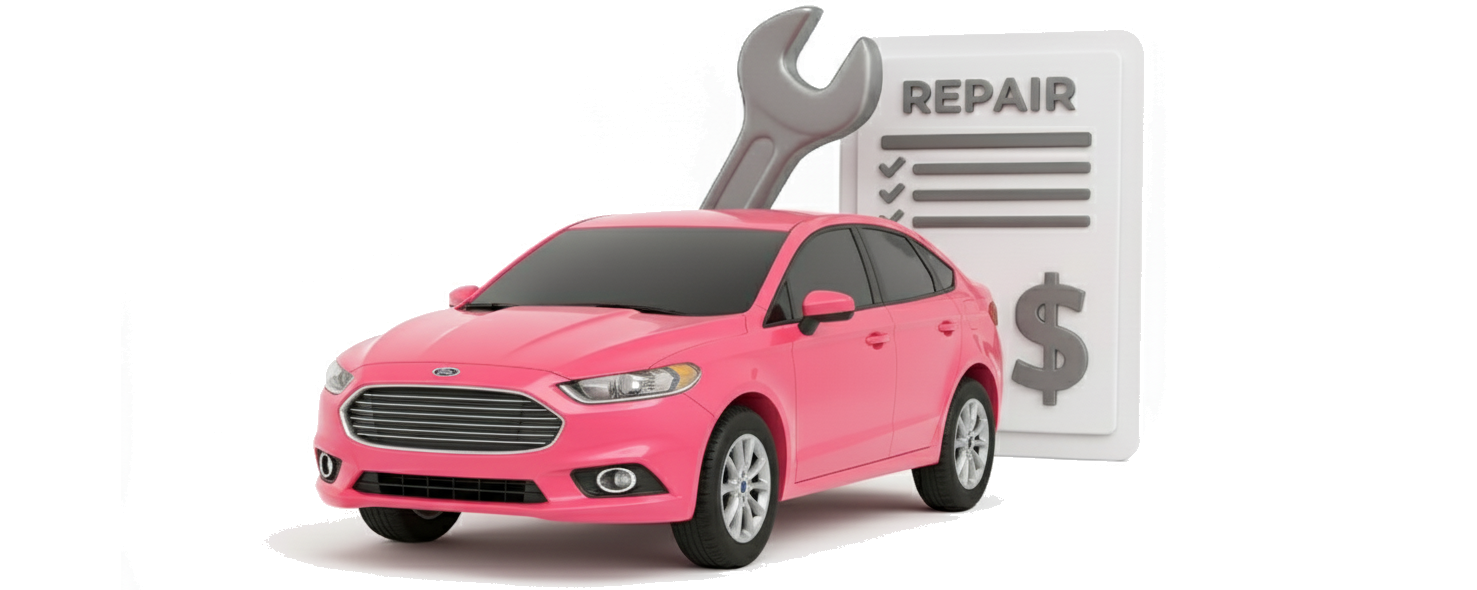At Jerry, we’ve helped 40,000 people with this service and found that a professional inside patch/plug combo repair typically runs $20-$45 per tire. In high-cost areas or on specialty tires like low-profile or run-flats, the cost can rise to $40-$75.
If damage is in the sidewall/shoulder—areas considered unsafe to repair—you’ll be looking at $90–$250+ for a replacement tire depending on size and brand.
A standard repair usually covers dismounting, an inside patch/plug combo (industry standard) and rebalancing. There may be extra charges for valve stems or tire pressure monitoring system TPMS kits ($5-$15), mobile call-out ($30-$75), sealant cleanup ($10-$30) or tire disposal ($3-$8).
Pro tip: Run-flat tires are designed to be driven for short distances after losing air, but this still damages the internal structure. Replacement is recommended over repair, and some shops won’t repair run-flats.
Download the Jerry app to compare local tire patch costs and book a no-call appointment quickly.
Real customers Jerry has helped
Costs for getting your tire patched or plugged depend on your exact vehicle, where you live and the quality of parts used. With Jerry, you can quickly see what drivers are paying right now. Below are real examples of customers we’ve helped secure top prices for when they need to patch a tire.
Estimates are modeled based on real vehicle and location data; names have been changed. Actual prices will vary by shop, parts, and vehicle condition.
Why tire repair prices vary
- Repair method: Plug-only is cheap ($10–$20) but temporary. The proper inside patch/plug is $20–$45 and provides durability and safety.
- Tire type/size: Low-profile or XL often adds $10–$30 more. Some shops refuse run-flat repairs.
- Location: Urban/coastal markets often add $5–$20.
- Balancing/consumables: Balancing is often included; if not, add $10–$20. Rubber valve stems or TPMS service kits add $5–$15.
- TPMS: Sensor replacement (if damaged or battery-dead) is $50–$150. Some vehicles require a relearn procedure.
- Mobile service: Adds $30–$75 for convenience. Weigh the costs by comparing quotes in the Jerry app.
- Sealant disclosure: Using Fix-a-Flat/Slime can add $10–$30 for cleanup and may harm TPMS.
- Bead leaks vs punctures: Corroded bead seats need cleaning/sealant ($10–$30); a patch won’t fix a bead leak.
- Warranty/road hazard: May cover repairs free at participating retailers.
- Repairability: Punctures >1/4 inch (6 mm), beyond the outermost main groove (shoulder/sidewall) or unsafe liners require replacement.
Line-item snapshot:
What is a tire patch vs. tire plug?
Tire patch: A vulcanized patch applied inside the tire after dismounting during tire puncture repair. The preferred fix is a combination patch/plug: the plug portion seals the puncture channel and the patch bonds to the inner liner for airtightness and strength.
Tire plug: A sticky rubber strip inserted into the tire injury from outside using a special tool. DIY friendly but not permanent.
Pro tip: External plugs can get you home, but you should always follow up with a proper repair.
Signs you need a tire patch repair
- TPMS Light or slow pressure loss: Track PSI; faster loss = faster attention.
- Visible object in the tread: Don’t pull it until you’re ready for repair.
- Hissing or bubbling: Soapy water reveals steady bubbles at the leak.
- Handling changes or vibration: Low tires feel “squirmy” or may pull; stop and inflate or swap to a spare.
Also consider bead leaks (bubbling along the rim), which need bead-seat service—not a patch.
When repair is not safe:
- Sidewall/shoulder damage or punctures
- Punctures larger than 1/4 inch (6 mm) or irregular tears
- Multiple punctures that are close together
- Run-flats driven too far/long at zero pressure
- Tires under ~3/32–4/32” tread or aged ~6–8+ years
If in doubt, ask to see the inside of the tire after dismounting. A good tech will show and explain.
Your action plan: How to save money
Confirm it’s repairable:
Tread puncture ≤6 mm and away from the crown are usually repairable. Shoulder/sidewall, big/irregular holes, heat-damaged = replace.
Don’t drive on it flat:
Even short distances can cook the inner liner and kill repairability—especially on run-flats.
Ask for a proper repair:
What you should hear/see: dismount and inside inspection, inside patch/plug combo (“mushroom”), patched liner cleaned/buffed and rolled, stem trimmed flush and rebalance. Ask for a photo of the inside repair and the removed object.
Clarify what’s included:
Quote should cover dismount, inside patch/plug and balance. Ask about valve stem/TPMS kit, potential TPMS relearn and whether road-force balance is only if vibration persists.
Bring details:
Photos of sidewall (size/load/speed, run-flat marking), TPMS status and your wheel lock key. Note any sealant used.
Check coverage:
Road-hazard plans, some big-box stores, tire brands and select credit cards may cover repair/replacement.
Mind the upsells:
Shops may suggest add-ons like an alignment or new tires. If there is no clear evidence of uneven wear, you may politely decline.
Time your visit:
Midday/midweek is faster than open/close or weekend rush. Request torque-to-spec on lug nuts.
Pro tip: If replacing one tire on AWD/4WD, match circumference within ~2/32–3/32” (may need a pair).
Related repairs
- Valve stem or TPMS service kit: Cheap insurance when the tire is off.
- TPMS sensor replacement: Only if damaged or battery-dead (common at 7–10 years)
- Wheel inspection/repair: Curb hits can bend/crack wheels.
- Bead-seat service: Corrosion clean-up and reseal.
- Sealant cleanup: Necessary if fix-a-flat or slime was used.
- Rotation and balance: Efficient if you’re near a rotation interval, which you can easily track by setting maintenance reminders in the Jerry app.
- Alignment: Only for abnormal wear or impact damage.
DIY vs. Pro: Can I do this myself?
Pro tip: If you DIY plug a tire, get it professionally repaired as soon as possible.

Get a firm quote and book in minutes with the Jerry app.
What our customers are asking us
-
Is a plug safe?
-
How long does a proper patch/plug last?
-
Can you patch a run-flat?
-
How many patches are safe?
-
Do I need rebalancing?
-
Any age or tread-depth limits?
-
Will the repair affect speed rating or warranty?
-
Why did the shop replace a TPMS kit?
-
What if the puncture is near the shoulder?
-
Can I drive on a slow leak for a few days?
-
If I replace one tire on AWD/4WD, do I need two?

Jerel Lawrence is an experienced and certified automotive technician with a strong foundation in diagnostics, repair and technical mentorship. A graduate of NASCAR Technical Institute in 2010, Jerel began his career at national automotive repair chain locations, where he earned eight certifications from the National Institute for Automotive Service Excellence (ASE).
From 2017 to 2022, he worked as a General Motors-certified technician at a Cadillac dealership, refining his skills in manufacturer-specific diagnostics and service procedures. Today, Jerel leads as the senior technician and mentor at a family-owned repair facility, where he helps guide the next generation of technicians while ensuring top-quality service.
In addition to hands-on work, Jerel contributes to the automotive community through writing detailed articles and answering technical questions to help vehicle owners better understand and care for their cars.

Everett Cook is an award-winning journalist and editor with more than 10 years of experience across a variety of industries. In editing for Jerry, Everett’s mission is to help readers have a better understanding of the costs of owning or leasing a car and to better understand their vehicle in terms of insurance and repairs. Prior to joining Jerry, Everett was an editor for Axios. His previous work has been featured in The New York Times, The Los Angeles Times, The San Francisco Chronicle, The Atlantic, Atlantic Re:think, The Boston Globe, USA Today, and others. He’s also been a freelance writer and editor with experience in SEO, audience building, and long-term content roadmaps. Everett is a proud graduate of the University of Michigan.









